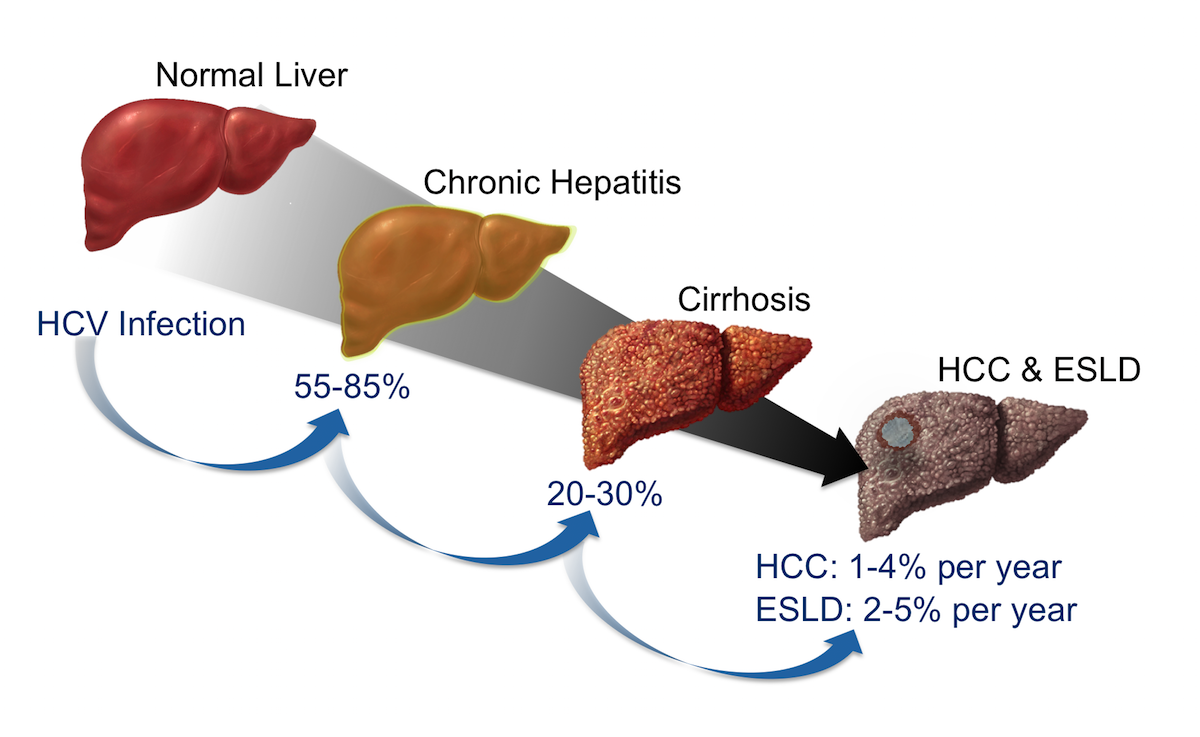for Health Care Providers
Natural History - Hepatitis C
Contents
Key Points

Figure: Natural History Following Initial Infection with HCV. Abbreviations: ESLD is end-stage liver disease, HCC is hepatocellular carcinoma
- Approximately 55 to 85% of persons infected with HCV will develop chronic infection.
- Factors associated with spontaneous clearance of HCV include younger age at infection, female sex, race other than African American, IL28B CC genotype, and symptomatic acute infection.
- The natural history of HCV infection has not been clearly defined because of the lack of prospective studies. Our understanding of the natural history of hepatitis C is primarily based on retrospective studies.
- Among those who develop chronic HCV infection, an estimated 20 to 30% will develop cirrhosis.
- It is impossible to predict the rate of fibrosis progression in an individual early on in their infection, but there are some fixed and modifiable factors that have been shown to influence disease progression.
- Factors associated with an increased rate of fibrosis progression include acquisition of HCV at an older age, increased age independent of duration of infection, male sex, heavy alcohol use, coinfection with HIV or HBV, hepatic steatosis, and insulin resistance.
- Individuals who develop hepatitis C-related cirrhosis have approximately 1 to 4% risk per year of developing HCC.
- The natural history of HCV can be averted with the newly available direct acting antivirals with cure rates exceeding 95% in the majority of patients.
References
- Figure source: Lingala S, Ghany MG. Natural History of Hepatitis C. Gastroenterol Clin North Am. 2015;44:717-34.
- Summary points used and adapted with permission from: Thornton, K. (2018, May 31). National History of Hepatitis C Infection. Hepatitis C Online. (University of Washington). Retrieved December 2019, from www.hepatitisc.uw.edu/go/evaluation-staging-monitoring/initial-evaluation-chronic/core-concept/all.




















